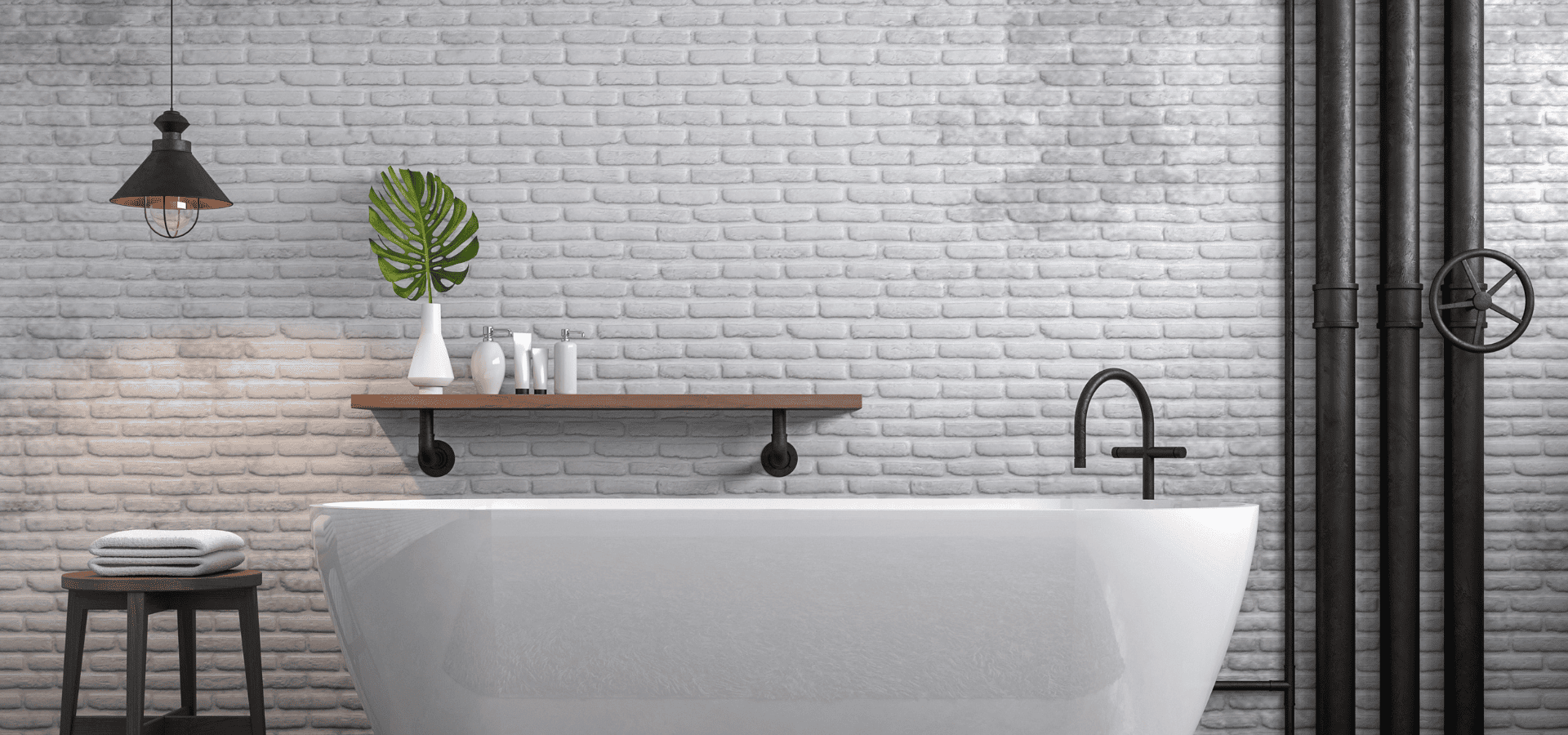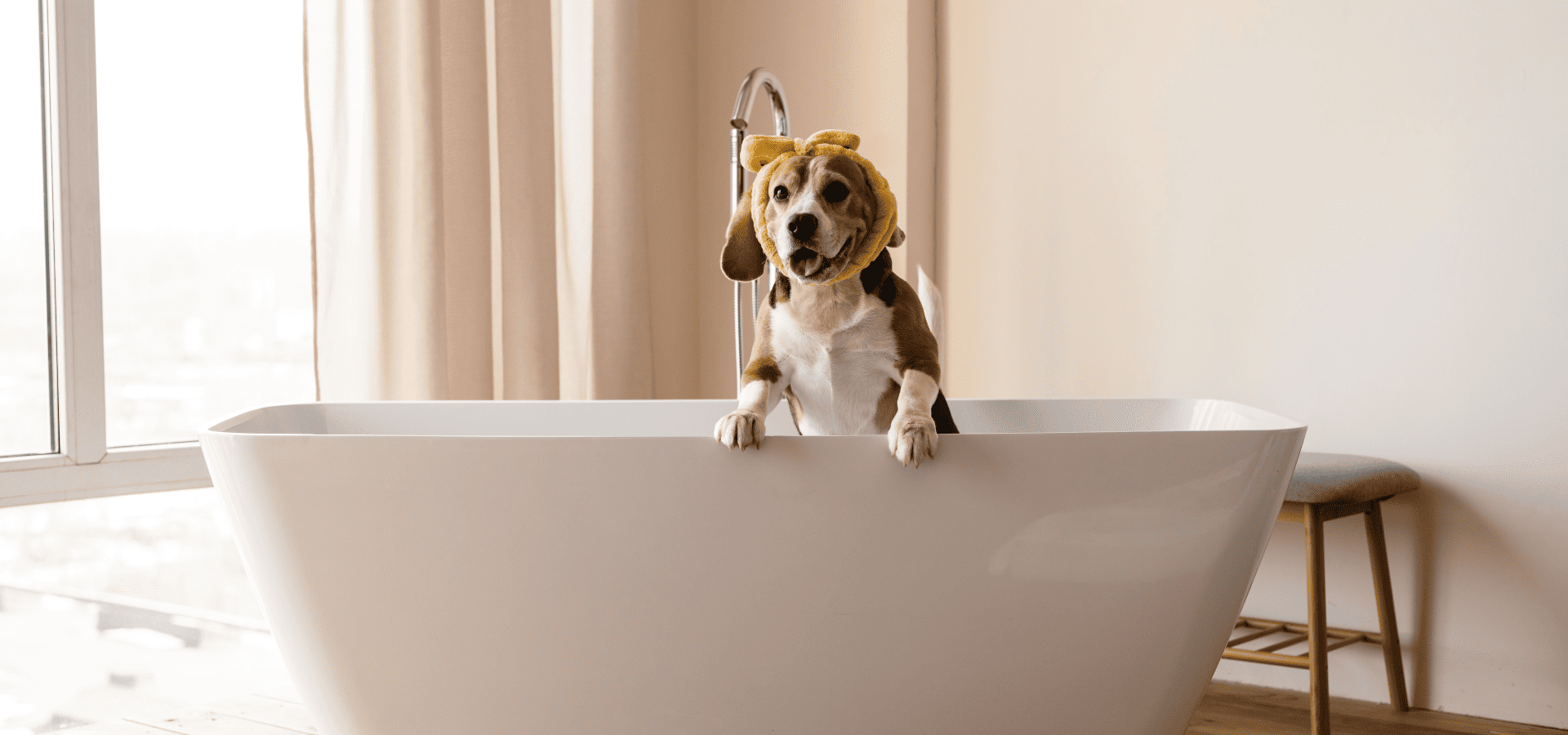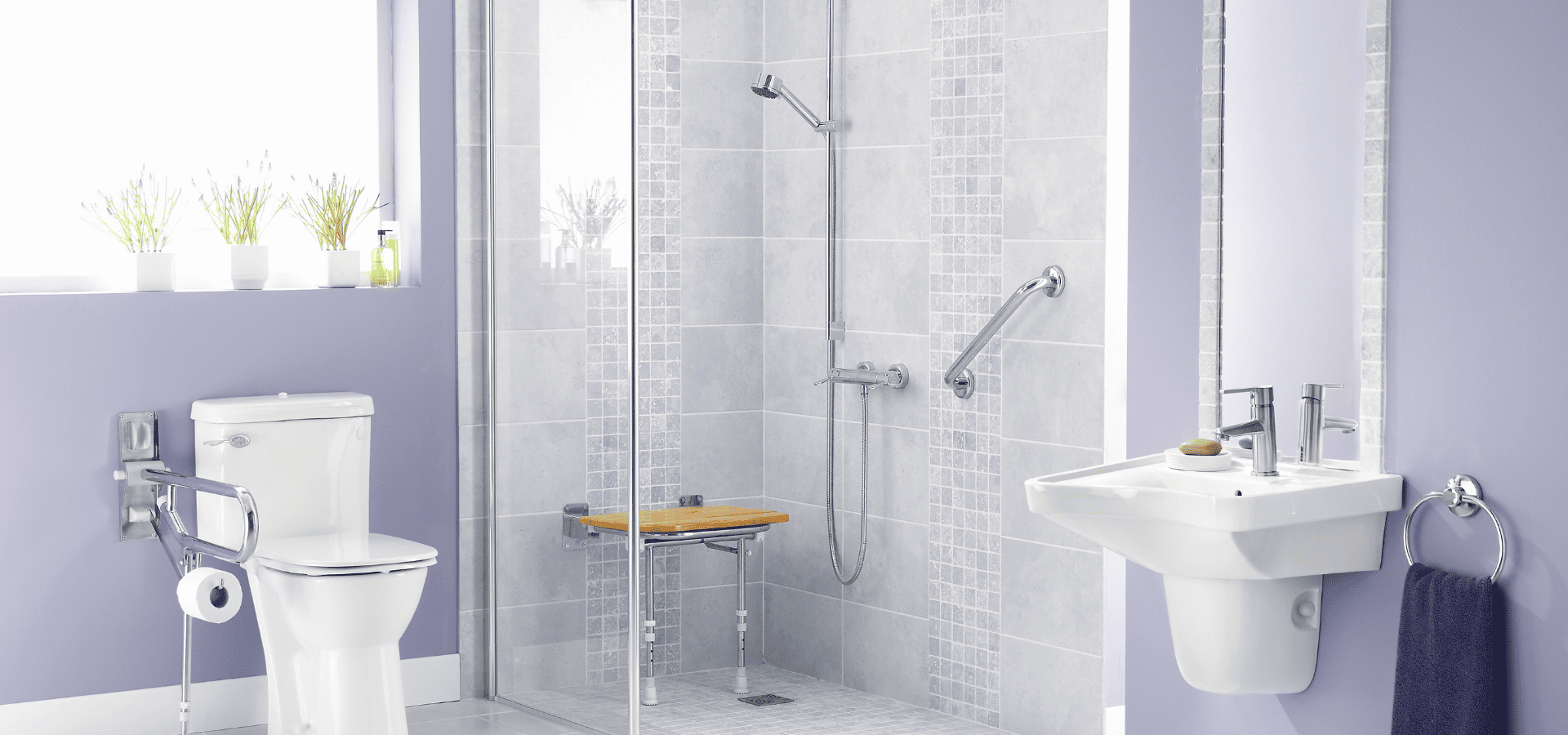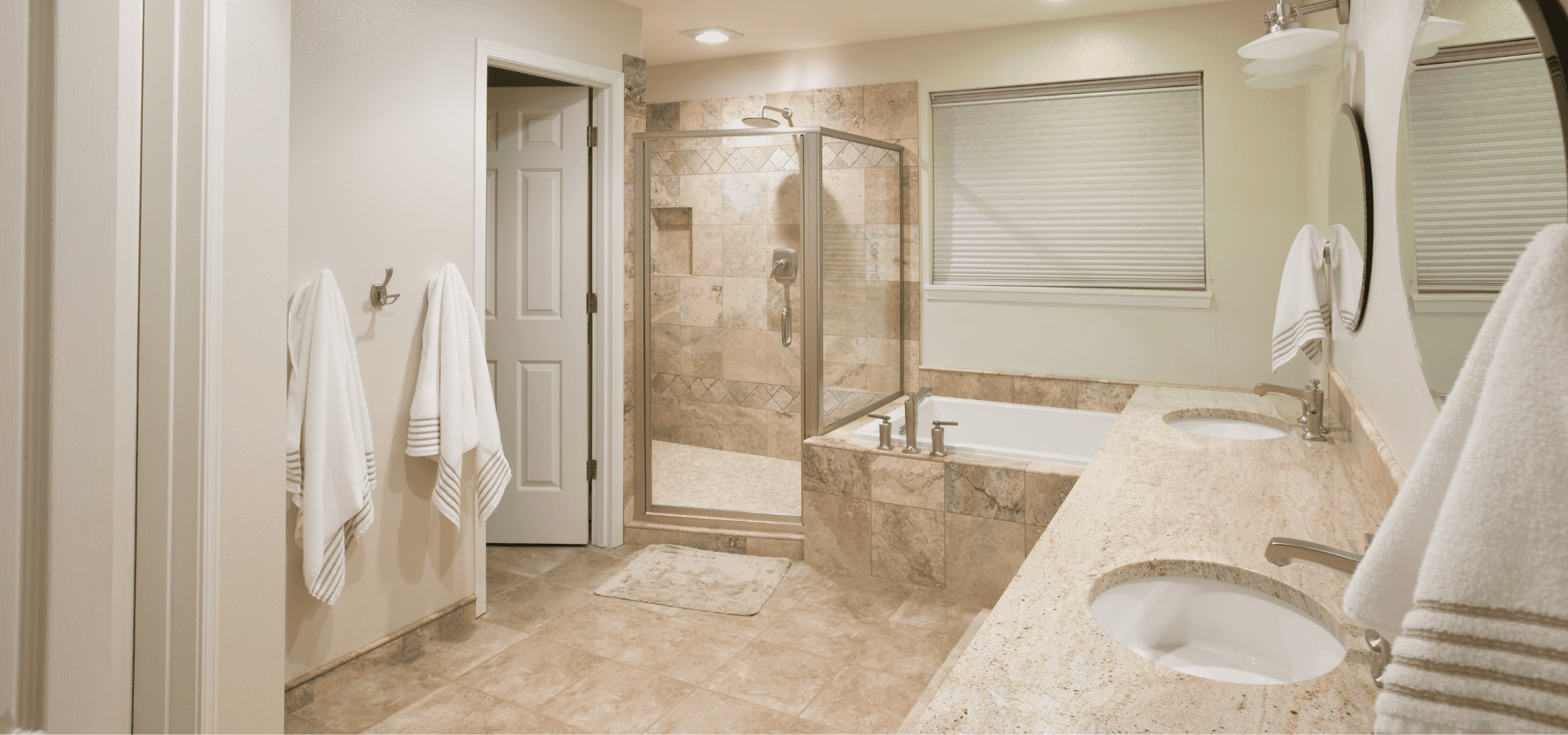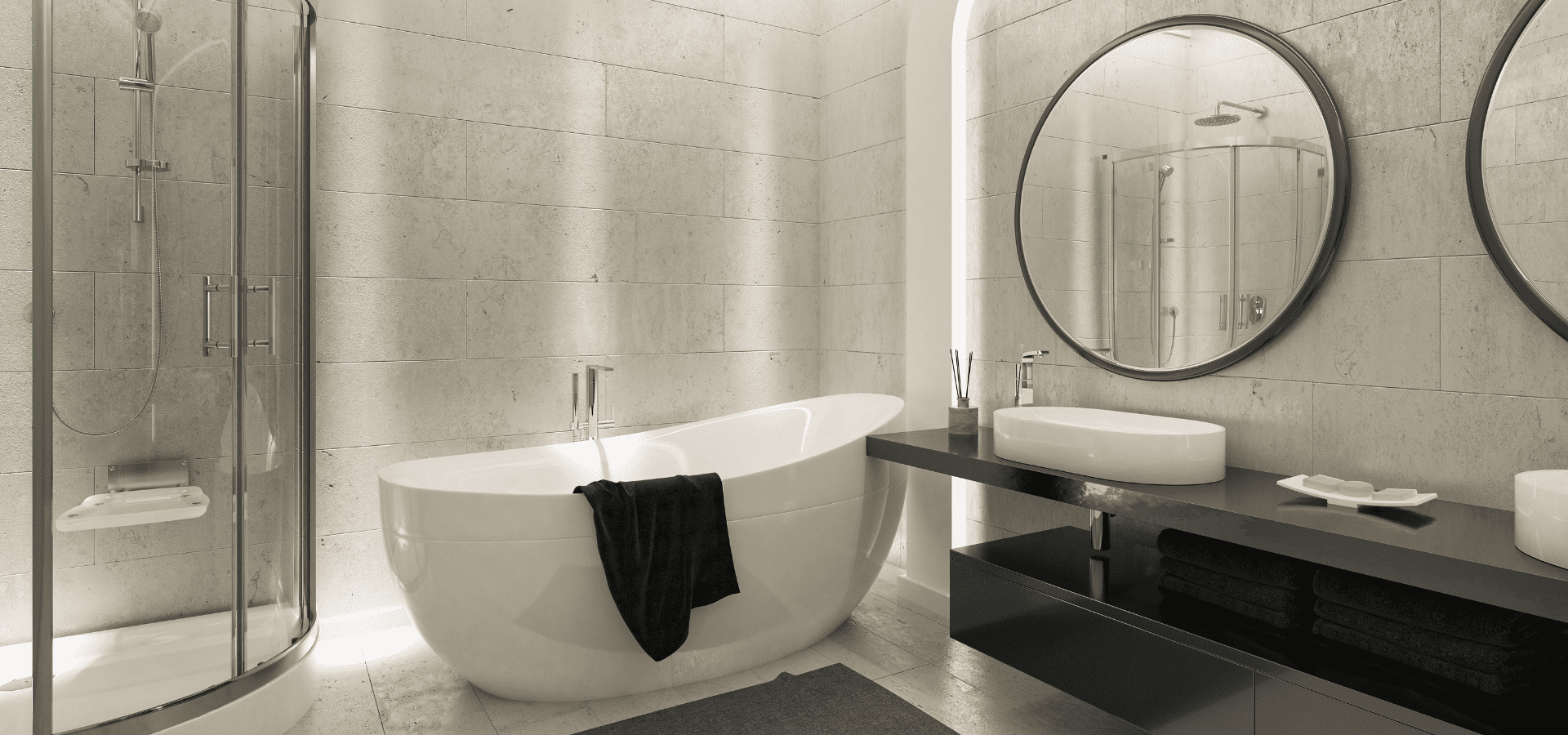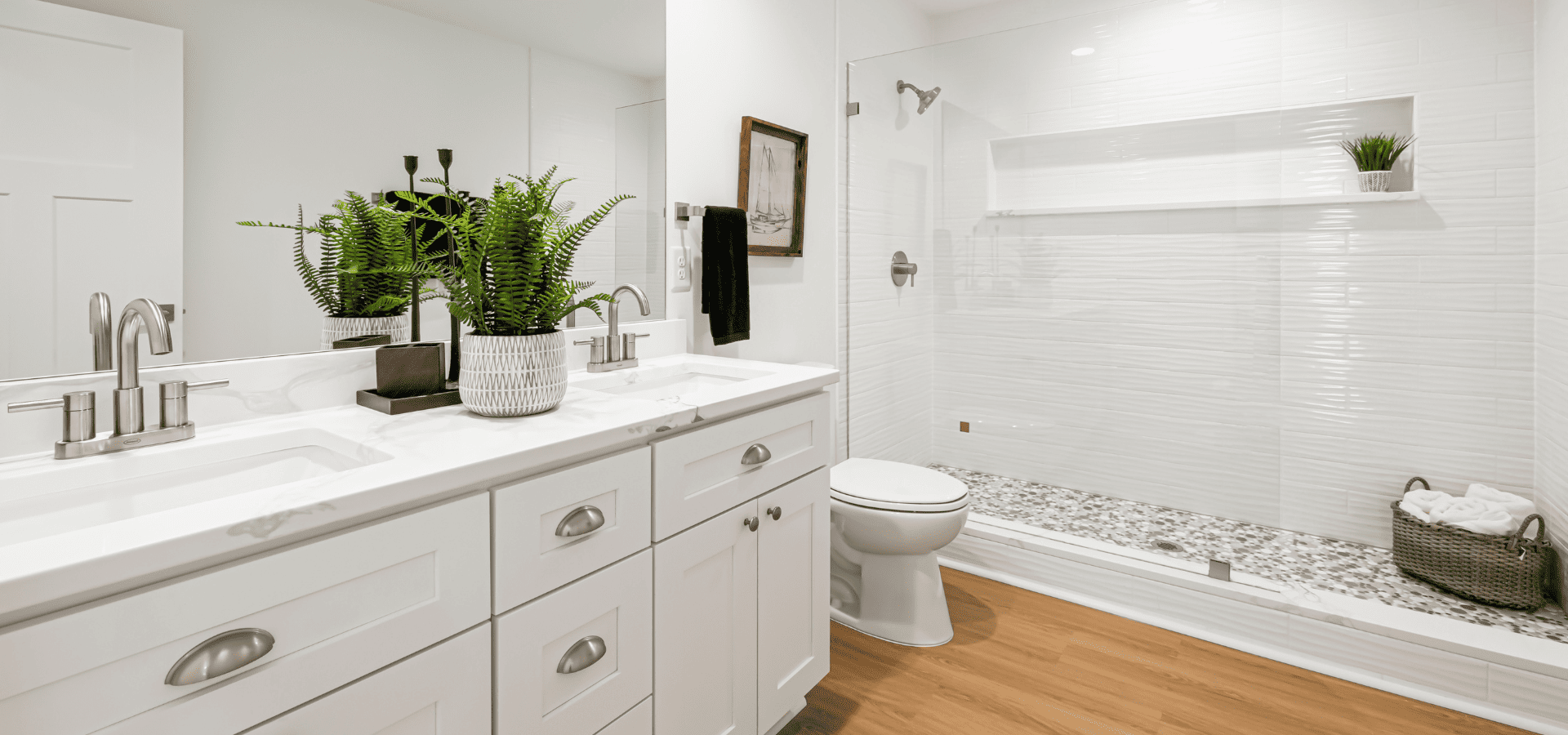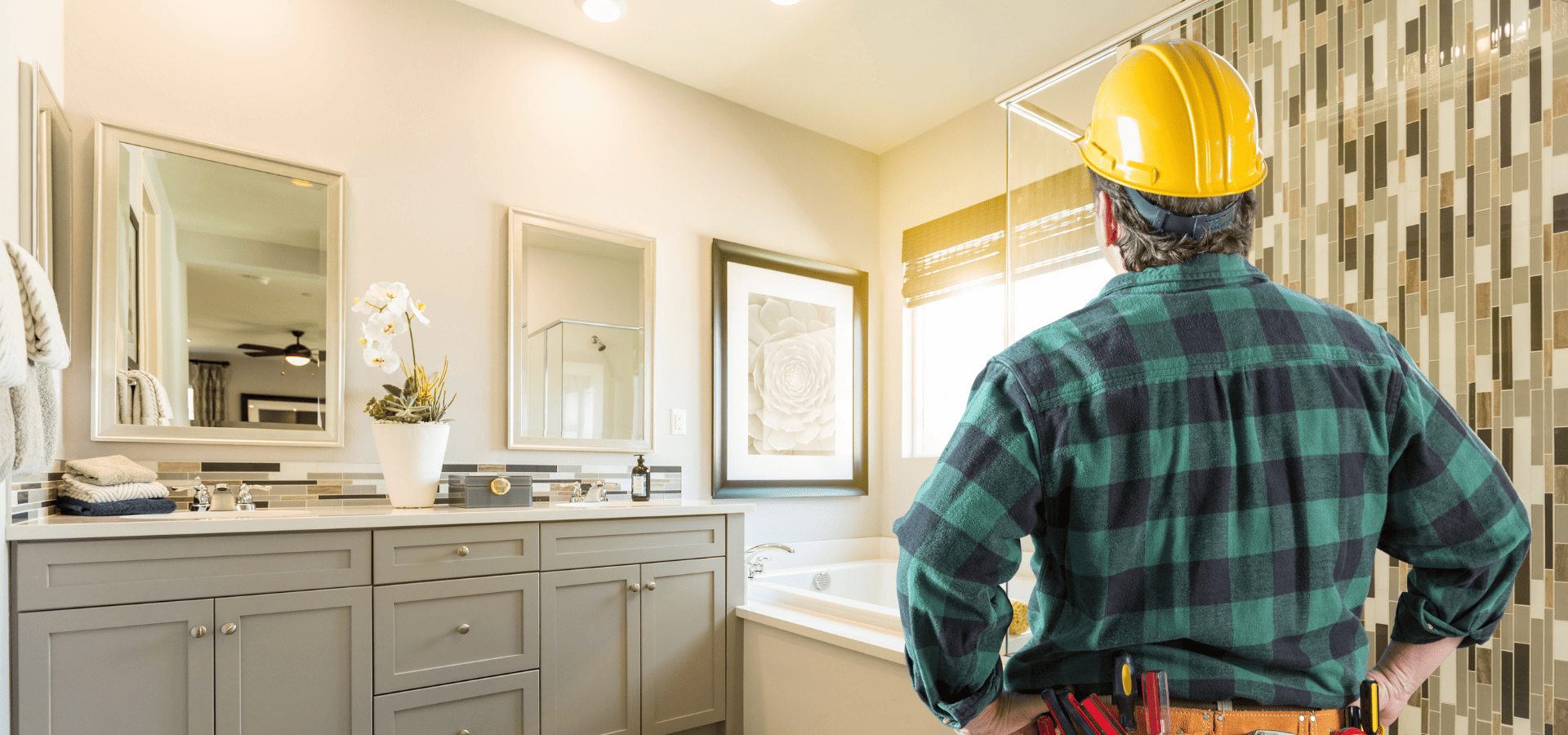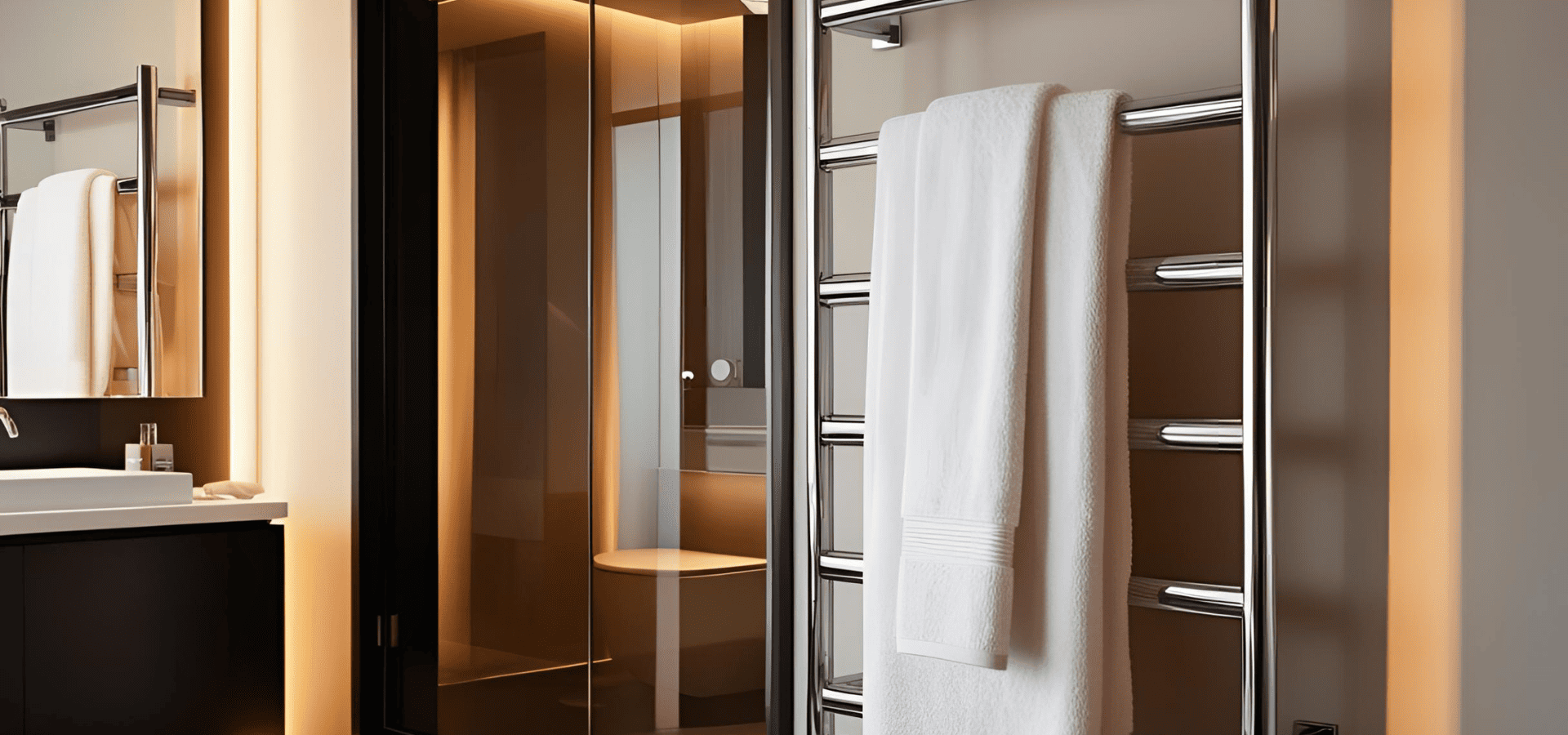Modern Bathroom Remodeling Guide
If you're staring at a beige-tiled time capsule every time you step into your bathroom, you're not alone. Plenty of Denver homeowners are living with bathrooms that haven’t had a proper update since the Bush administration (and not the one you’re thinking of).
Remodeling your bathroom isn’t just about chasing design trends or flexing for resale value, though it helps on both fronts. Remodeling a bathroom is about function, comfort, and sanity. It’s about making a room you use every single day feel like it actually belongs in this decade — and in your life.
This guide walks you through the key choices, design moves, and behind-the-scenes planning that go into a smart, modern bathroom remodeling, particularly in Denver, where bathrooms are temperamental at best, and a walk-in disaster most other days of the week.
Whether you’re gutting the whole space or giving it a top-to-toe refresh, this is the straight-talking blueprint to get it done right… And modern.
What Is A Modern Bathroom?
Before we dive into tile specs and fixture swaps, let’s get one thing clear: modern doesn’t just mean “futuristic.” It also doesn’t mean “cold” or “minimalist to the point of misery.”
In a Denver context (and more generally speaking), “modern” bathroom design usually means:
- Clean lines and uncluttered layouts
- Durable, low-maintenance materials
- Updated plumbing and lighting
- Better use of space (especially in older bungalows or split-level homes)
- Smart storage that doesn’t feel like an afterthought
- Fixtures and finishes that feel fresh, not faddish
The goal? A space that feels calm, functional, and, yes, a little bit luxe. You don’t have to go full futurism with a Japanese soaking tub and a bidet that plays your favorite podcast.
You just need a bathroom that captures the ethos of modern, functional living.
What Makes A Bathroom Feel Dated?
Before you know where you're going, you’ve got to know what you're leaving behind. Here’s what screams “remodel me” in bathrooms circa 2024:
- Oversized tubs no one uses (hello, corner Jacuzzi)
- Builder-grade vanities with warped MDF and no storage
- Brown-on-brown tile or early-2000s faux stone
- Fluorescent bar lighting that makes everyone look ill
- Plastic surrounds and acrylic inserts that yellow over time
- Low-profile toilets with the flushing power of a polite whisper
- Zero outlets or outlets in the wrong places (especially in homes pre-1980)
Even if your bathroom still technically works, these features can chip away at the vibe. “Technically works” doesn’t mean it's comfortable, clean, or usable.
Design First, Plumbing Second

Here’s a rookie mistake we see all the time: homeowners start picking out vanities, faucets, and tiling before they think through the layout.
But a bathroom’s layout is everything. It’s especially important in metropolitan areas like Denver, where bathroom square footage is a precious commodity. And in older properties (think Tudor- or Victorian-era), you’re often working with weird footprints and outdated plumbing paths.
Modern bathroom remodeling flips the script. Rather than designing around where the plumbing already is, we instead design for how the space should function. Then, if we need to move the plumbing to match the layout, that’s what we do!
Yes, it’s more work. But it also results in a better bathroom. It’s the only way to turn a “meh” remodel into a truly modern one.
Key layout upgrades that capture this modern approach include:
- Swapping a tub-shower combo for a walk-in shower (with frameless glass or open entry)
- Replacing double sinks with a long trough sink and a floating vanity to save room
- Relocating the toilet to create better flow or sightlines
- Adding a linen niche or tower instead of a clunky over-the-toilet cabinet
Form follows function… But in bathrooms, so does style.
Modern Fixtures
You don’t need to blow the budget on designer hardware. But the right pieces will bring your bathroom into the present.
Let’s divide into some fixtures you really want to pay attention to when remodeling for a modern bathroom feel.
Faucets And Shower Valves
For modernity in your faucets, matte black, brushed gold, and unlacquered brass are reigning champs right now. (Though chrome still works if the silhouette is sleek.)
Single-handle mixers create a cleaner look and are easier to use. And thermostatic shower valves — the kind that let you preset your temperature — feel indulgent in the best possible way.
Toilets
For toilets, skirted models (i.e., no exposed pipes at the base) are not only easier to clean, but they also look sharper. Comfort height is also now the standard — especially helpful in multi-generational homes — and dual-flush options improve water efficiency.
Easier to clean, less wasteful, and more comfortable: these are the key factors. Try and replace your old throne with something worthy of your tush.
Vanities
Vanities have had a glow-up too!
Floating models make small spaces feel bigger and add a touch of modern lightness. Meanwhile, integrated sinks reduce seams (and cleaning headaches), while drawers beat cabinets almost every time in terms of storage and usability.
Lighting
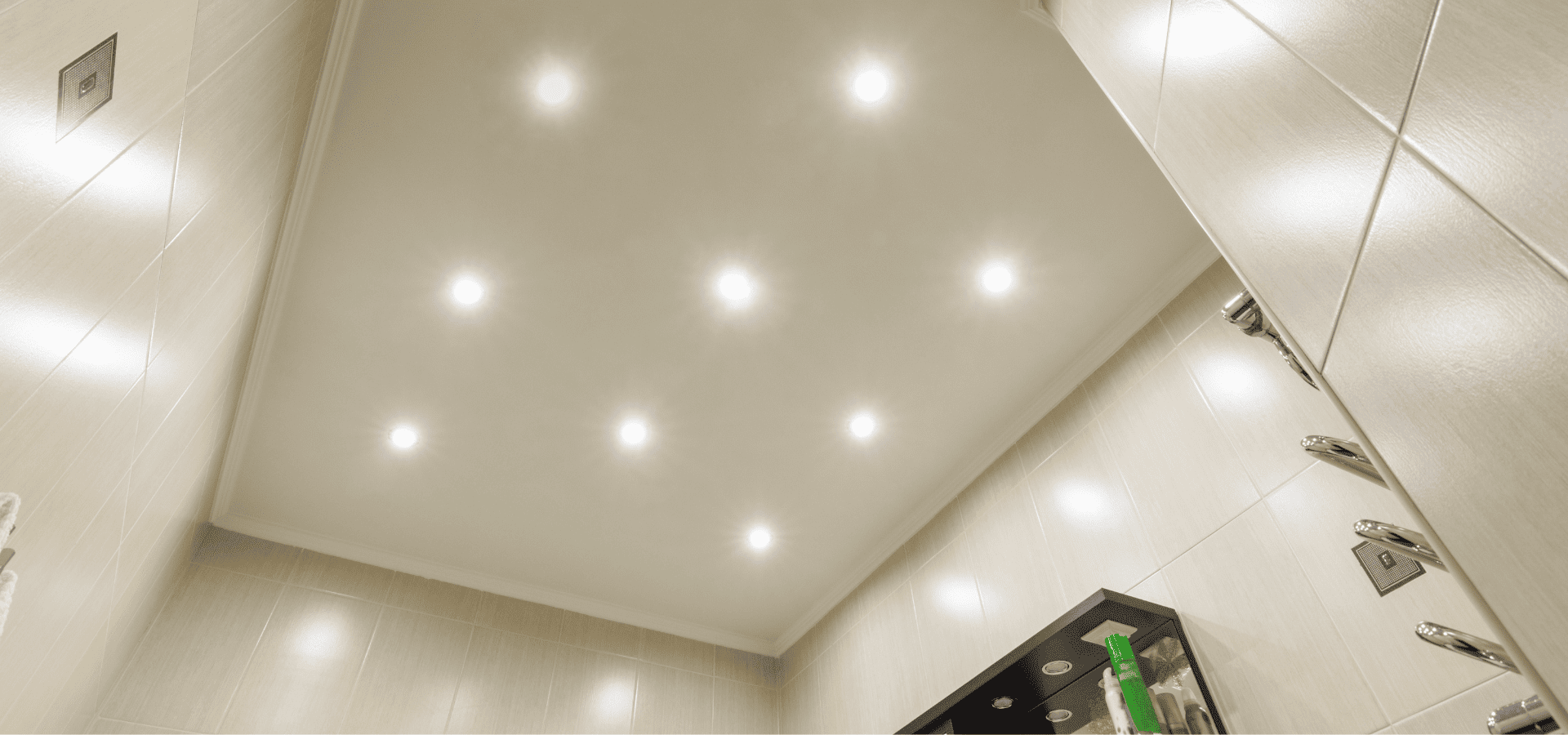
Finally, don’t forget lighting. A modern bathroom relies on layered lighting: task lighting for grooming, ambient lights for overall glow, and accent lighting for drama or softness.
Sconces placed at face height offer the most flattering illumination. And utilize dimmable options too, as they make late-night visits or long soaks far more relaxing.
Tiling: Big Looks, Less Maintenance
Tile is where many modern bathroom remodels go sideways. It’s not because the homeowner picks the “wrong” one, but because they overdo it or underthink the layout.
Here’s the key: balance scale, texture, and surface finish. And use tiling where it earns its keep.
Some A-grade tiling moves for a smart, modern bathroom feel include:
- Large-format tiles on floors mean fewer grout lines and easier cleaning
- Matte or honed finishes are more forgiving of water spots and soap scum
- Vertical stack layouts or offset patterns feel contemporary without screaming for attention
- Accent niches in showers should be subtle, not star-of-the-show — unless you're going maximalist
Avoid overcomplicating it. Choose a restrained palette (two to three materials max) and let one element do the talking, whether that’s a bold floor pattern, a marble-look wall tile, or a terrazzo-style basin.
Also, pro tip! In Denver’s dry weather (and other similar climates), sealed natural stone can dry out and fade faster. Porcelain that mimics stone might be the smarter bet long-term.
Storage That Doesn’t Suck
A truly modern bathroom isn’t just pretty: it’s livable. That means smart, intuitive storage that doesn’t take up half the room. (The golden standard of all modern design!)
Some storage ideas that work for a variety of bathrooms are:
- Wall-recessed niches for shampoo or backup TP
- Shallow pull-outs inside vanity drawers for makeup or toothbrushes
- Tall linen towers with adjustable shelves
- Built-in bench storage in larger primary baths
Also… ditch the medicine cabinet unless it’s recessed and sleek. Otherwise, it just makes the wall feel bulky and dated.
Waterproofing, Heating, And All the Invisible Stuff
Let’s talk about the guts. If the layout is the bones of your bathroom, these are the organs.
You won’t see them, but you’ll absolutely feel them if they’re done wrong — or not at all.
Waterproofing
Waterproofing should go beyond green board and good intentions. A full system typically includes cement board or waterproof foam panels (like Wedi or Schluter), plus proper sealing around shower pans, niches, and seams.
Flexible membranes are essential too! Climates with freeze-thaw cycles similar to Denver can cause slight expansion and contraction that cheaper materials just can’t handle.
Heating
Radiant heating isn’t essential, but it’s increasingly common, especially in tile-floor bathrooms with no ductwork. And electric underfloor heating is a quiet luxury that pays off every winter morning.
Once you’ve had it, there’s no going back. (And also, it’s a big win for resale value.)
Ventilation And Airflow
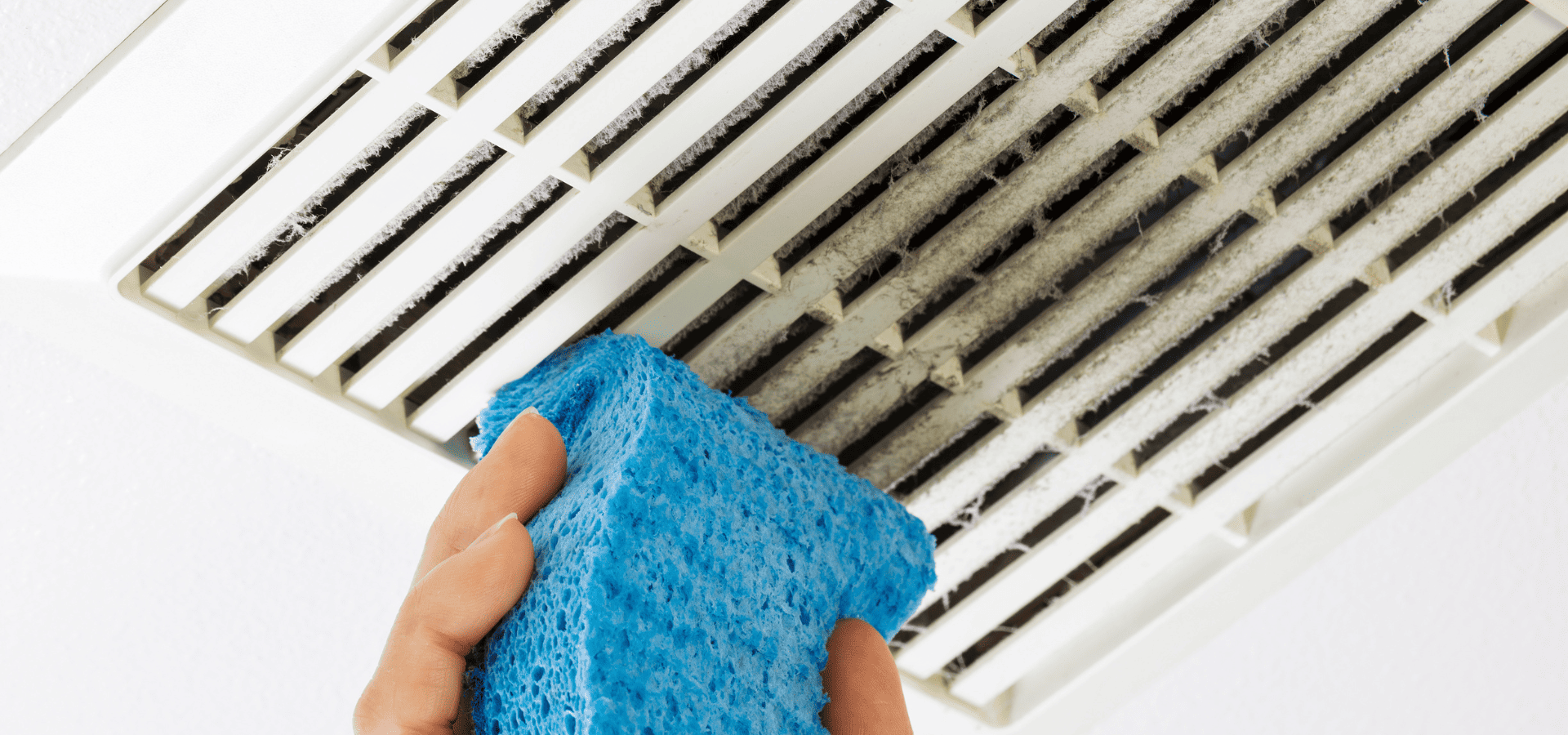
Ventilation is another must. Too many old bathrooms are under-vented, and this is a disaster in moisture-prone climates.
A quiet, properly sized exhaust fan that vents moisture outside (and not into the attic) keeps the air quality high and the mold risk low.
Budget Talk (Because Let’s Be Real)
Remodeling a bathroom isn’t pocket change. Prices vary quite wildly across the country too, so you have to do localised research.
However, using Denver as a benchmark, here’s a rough range:
- Powder room facelifts or simple refreshes: $7k–$15k
- Midrange remodel (gut and refresh): $20k–$35k
- High-end remodel (custom work, premium materials): $35k–$60k+
That might sting, but modern bathroom remodeling isn’t just about looks. You’re investing in plumbing, electrical work, waterproofing, and the sheer amount of labor that goes into working in a small, highly technical space.
You can save in smart ways (prefab vanities, standard tile sizes), but skimping on waterproofing or layout logic is a false economy. Trust us on this.
Final Word: You Deserve Better Than A “Functional” Bathroom
Modern bathroom remodeling is about more than resale or Pinterest-worthy tile. It’s about claiming a part of your house that you use every day and making it feel like it was designed for you…
Your lifestyle. Your routines. Your taste.
If you’re doing this bathroom remodeling in Denver, give us a call! After all, you want someone local who understands the homes. And really, I’d say that no matter where you live.
Bathrooms are tricky. Every area has its own quirks and idiosyncrasies. The locals know how to remodel without turning your house into a war zone.
A good remodel blends comfort, beauty, and smarts. It anticipates your needs and gives you quiet joy every time you turn on the tap or step into the shower. That’s the core tenet of modern bathroom living.
If your current bathroom isn’t doing that? Let’s talk. Your modern bathroom is waiting — promise.
You’ve just got to find the right crew to build it for you.
More From Us

